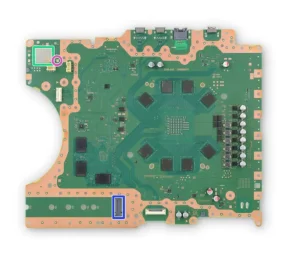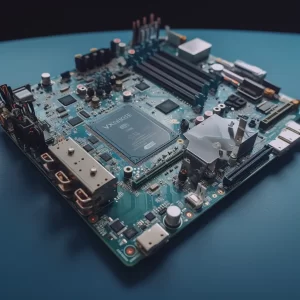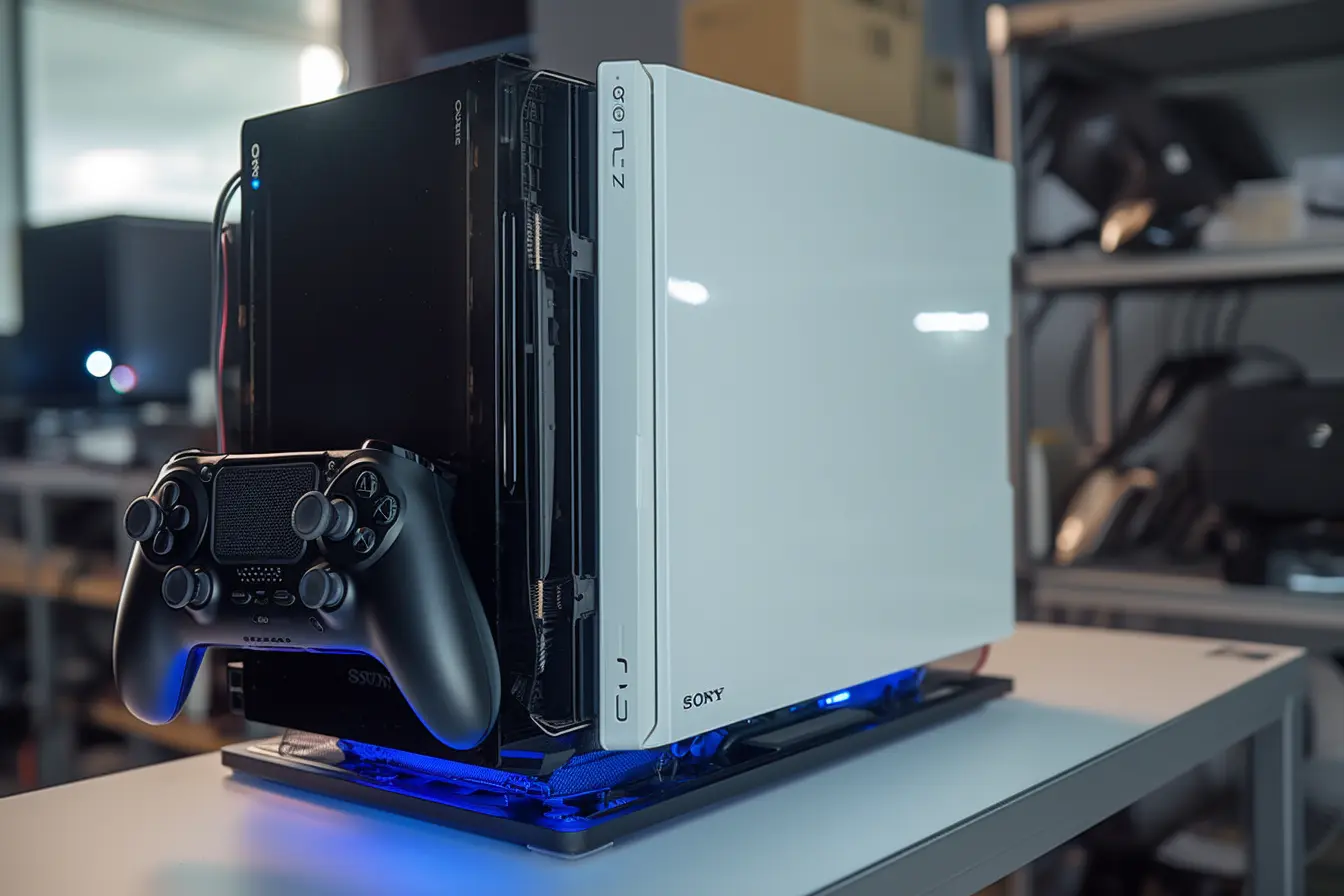“Can I build a computer with a PS5 motherboard?” presents an intriguing query, particularly for those deeply invested in the realm of computer technology, who may find the challenge appealing.
To address this query, one must commence with a thorough examination of the fundamental disparities between the PlayStation 5 (PS5) and traditional PC hardware. The PS5 represents a meticulously specialized gaming console, its design anchored solely in delivering superior gaming experiences. Contrarily, the PC is universally recognized as a multi-functional apparatus, engineered to execute a diverse array of tasks with precision.
Integral components such as the motherboard, CPU, GPU, memory, and storage are scrupulously tailored in the PS5 to optimize gaming performance. In contrast, the PC, with its characteristic versatility, affords end-users the flexibility of upgradeability through its support for interchangeable parts. However, these fundamental differences in design philosophy could inevitably give rise to a series of complexities.
Differences between PS5 and PC Motherboards
Design and Composition of PS5 Motherboard

The PS5 motherboard is a complex piece of hardware. Its key components include
- CPU and GPU: These are integrated together into a single custom chip, designed by Sony in collaboration with AMD. This chip is based on AMD’s RDNA 2 architecture and is optimized for gaming performance.
- Memory: The PS5 uses GDDR6 memory, which is soldered directly onto the motherboard.
- Storage: The PS5 uses a custom solid-state drive (SSD) solution, again integrated directly into the motherboard.
You may also like: Do You Need A Cooling Fan For Your PS5?
Design and Composition of PC Motherboard

PC motherboards, on the other hand, are designed for flexibility and upgradability. They typically feature
- CPU Socket: This is a slot on the motherboard that holds the CPU. The socket design allows for the CPU to be replaced or upgraded.
- Memory Slots: These are slots for RAM modules. PCs usually use DDR4 or DDR5 memory, which can be added or upgraded by inserting new modules into these slots.
- Storage Connectors: These are interfaces for storage devices. Most modern PCs use SATA or NVMe SSDs, which can be installed and upgraded via these connectors.
Key Hardware and Design Differences
Below is a summary of the key differences in hardware and design between the PS5 and PC motherboards
Components | PS5 Motherboard | PC Motherboard |
CPU/GPU | Integrated as a single custom chip, not user-upgradable | Separate components, user-upgradable |
Memory | GDDR6, soldered onto the motherboard | DDR4 or DDR5, user-upgradable via memory slots |
Storage | Custom SSD, integrated into the motherboard | SATA or NVMe SSDs, user-upgradable via storage connectors |
One crucial difference is in their fundamental design philosophies. The PS5 motherboard is built to deliver a fixed, high-performance gaming experience, and the hardware is fixed and non-upgradable. In contrast, a PC motherboard is designed to be flexible and upgradeable to cater to a wide range of uses and preferences.
Challenges in Building a PC with a PS5 Motherboard
Constructing a PC using a PS5 motherboard presents several considerable challenges due to hardware compatibility issues, operating system compatibility, and the closed system architecture of the PS5.
Hardware Compatibility Issues
The PS5 motherboard consists of proprietary components and interfaces. For instance, the CPU and GPU are integrated together into a custom chip, and the memory and storage are also soldered directly onto the motherboard. This non-standard configuration results in several compatibility issues:
- Non-upgradable Components: The CPU, GPU, memory, and storage are all integrated directly onto the PS5’s motherboard and are not user-upgradable. This differs significantly from PC motherboards, which are designed to be modular and upgradeable.
- Unique Interfaces: The PS5 uses unique interfaces for its components, such as the custom SSD interface. These are not compatible with standard PC components.
Operating System Compatibility
The PS5 runs a custom operating system that is designed and optimized to take full advantage of its hardware. This OS differs significantly from typical PC operating systems like Windows, Linux, or macOS. As such, running these PC operating systems on a PS5 motherboard may lead to several compatibility issues, including:
- Driver Issues: PC operating systems may lack the necessary drivers to run the PS5’s custom hardware.
- Performance Issues: Even if it were possible to run a PC operating system on the PS5, performance could be significantly affected as these operating systems are not optimized for the PS5’s hardware.
You may also like: Can You Transfer Games From Steam To PS5?
Closed System Architecture
Sony has not publicly disclosed the detailed specifications and system architecture of the PS5, making it a closed system. This lack of transparency leads to a number of issues:
- Lack of Documentation: Without detailed documentation, it would be incredibly difficult to understand how to interface with and control the PS5’s hardware.
- Potential Legal Issues: Attempting to reverse-engineer the PS5’s system architecture could potentially lead to legal problems, as it may violate Sony’s terms of service or infringe on their intellectual property rights.
Cost-Benefit Analysis
The feasibility of building a PC using a PS5 motherboard also needs to be evaluated in terms of cost-benefit. This involves considering the potential costs of such a project and comparing them with the costs of building a PC with components specifically designed for that purpose.
Potential Costs of Building a PC with a PS5 Motherboard
Building a PC with a PS5 motherboard could be a costly endeavor for several reasons:
- Hardware Costs: As of now, a new PS5 console, from which you’d get the motherboard, is priced significantly higher than many mid-range PC motherboards.
- Software Costs: Adapting the PS5 motherboard to work with a PC operating system would require extensive software modifications, potentially necessitating the services of a skilled software engineer.
- Time Costs: Even if you have the skills necessary to modify the PS5 motherboard, the process could be extremely time-consuming.
- Risk Costs: There’s a high risk of damaging the PS5 motherboard during modification. Moreover, potential legal issues might also arise from copyright violations.
Costs of Using Components Designed for PCs
In contrast, building a PC with components specifically designed for that purpose is generally much less costly:
- Hardware Costs: A wide range of PC motherboards are available at various price points, many of which are much cheaper than a PS5 console.
- Software Costs: PC motherboards are designed to work with PC operating systems, eliminating the need for extensive software modifications.
- Time Costs: Building a PC from PC-specific components is straightforward and relatively quick, especially compared to the extensive modifications required to use a PS5 motherboard.
- Risk Costs: The risk of damaging components is generally much lower when building a PC the traditional way. Moreover, there are no legal issues to worry about.
Conclusion
In light of the technical, legal, and cost-related challenges presented, it’s evident that building a computer with a PS5 motherboard is a fascinating concept, but may not be practical or feasible. Therefore, the more pragmatic approach is to utilize components specifically designed for PCs, ensuring compatibility, optimal performance, and value for money.
Frequently Asked Questions
How much does it cost to build a PS5 equivalent PC?
Building a PC equivalent to a PS5 is contingent upon the market prices for components at any given time, which can fluctuate regularly. As of now, creating a PC with the same capabilities as the PS5, with a similar-spec CPU, GPU, 16GB of RAM, and a comparable amount of SSD storage, might cost you approximately $1,000 to $1,500. But remember, this doesn’t account for the cost of peripherals, such as a keyboard, mouse, or monitor, or the operating system. Moreover, the advantage of console gaming, like the PS5, is the optimization of games for that specific hardware setup, which is difficult to emulate precisely in a PC environment.
Can you make a PC with PS5 parts?
Technically, it’s not feasible to build a PC with PS5 parts. The PS5 uses a custom AMD Ryzen chip and a custom RDNA 2 GPU, both of which are not available for direct consumer purchase. Also, the PS5’s architecture is distinct and specifically optimized for the console, making it incompatible with a PC environment. While you can build a PC with similar specifications, you cannot directly use PS5 components in a PC.
What PC is equivalent to PS5 CPU?
The PS5 uses a custom AMD Ryzen Zen 2 CPU, which has 8 cores and 16 threads. In the PC space, an AMD Ryzen 7 3700X or the Ryzen 7 5800X would be a similar equivalent, offering the same number of cores and threads. Keep in mind, though, that due to the custom nature of the PS5’s CPU, the exact performance may differ.
Is a PS5 as powerful as a PC?
The PS5 is a potent console, capable of 4K gaming at up to 120 fps. However, whether it’s as powerful as a PC depends on the PC’s specifications. High-end gaming PCs can exceed the PS5 in terms of raw power, support a wider range of games, offer more customization and upgradability, and can be used for a variety of tasks beyond gaming. Yet, the PS5, with its specific game optimization, can provide a more streamlined gaming experience, with features like haptic feedback in the controller and exclusive game titles. Therefore, both have their strengths, and the choice between a PS5 and a gaming PC often comes down to personal preference and intended use.

